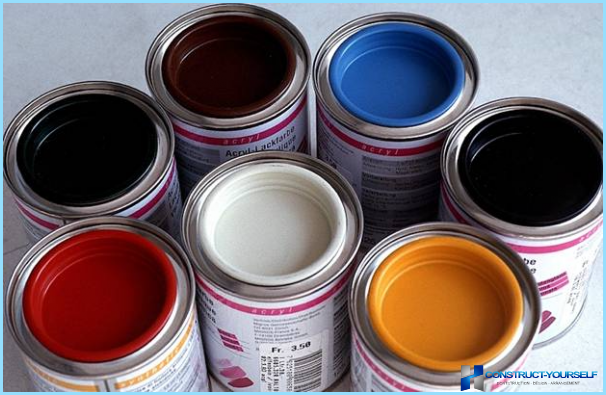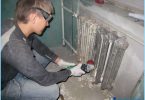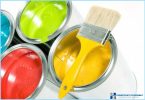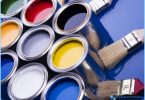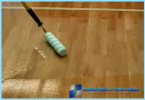The contents
Paint is one of the most popular finishing materials. Enamel is the most popular of their “competitors”. Its popularity is due to its ease of use and a pleasant after work – it turns a beautiful glossy surface, additionally, the cost of this material is quite low. Below the surface is trimmed so lasts as long as possible, you need to choose the right paint.
What is an enamel paint ↑
This material is one of the types of paint coatings. The composition of enamel paint 5 includes the following components:
- Varnish;
- Thinner or white spirit;
- Fillers;
- A variety of functional additives;
- Pigments are a certain color, that is supposed to be a shade of enamel paint.
Enamel can be used to perform the various activities of both external and internal, as they fit well on any surface. Enamel paint suitable for all materials: wood, metal, concrete and even brick. However, remember that in fire conditions it is better not to apply, as the varnish contained in the composition, flammable.
Enamel have good performance properties, they are well protected rough surface from high humidity and aggressive environmental influences. In this case, before painting, is almost no need to prepare, but more on that later.

The types of enamels ↑
There are various types of enamel paints, so here’s the list:
- Alkyd enamel – is the most popular. Alkyd enamel paint has a number of advantages – they are durable, easy to apply, and have an elastic structure and dry quickly. They are very often used in rooms with high humidity, e.g. bathrooms or swimming pools, as well tolerate changes in temperature and moisture. Alkyd paint, like any other has its own designation, so it can be easy to find, for example, pentaftalevoj basis, denoted as PF-253. The numbers also have a meaning, the first digit of the designation, consequently, 1 for exterior use, 2 – for indoor use. The last 2 digits is a number in the directory;
- Nitroenamel – the basis of enamel paint of this type is cellulose nitrate. Their peculiarity is that they almost instantly dry under normal conditions at room temperature. However, the environmental pollution of enamel paints of this type are very large. Therefore, their use is in many countries severely restricted or even prohibited. They are often used for surfaces of wood. The application of the coating is carried out mainly with the help of special nozzles, do so as fast drying paint is badly applied the usual physical way;
- Polyurethane enamel – the main advantage is durability. In this regard, they are used for painting floors in the rooms of common use, that is with high traffic, such as corridors in schools or in museums. On the second day after the completion of works, the painted surface is ready for operation. Remember safety, enamel paints are toxic, so working with them need special protection, gloves and protective glasses. The room during and after completion of works it is necessary to ventilate.
How to choose the right enamel paint ↑
The first thing you need to do is look at the label and on the condition of the banks with the material. It is important that the Bank was intact and had no visible damage such as dents and other things. This is important to remember, as if the tightness of banks is violated, the paint will certainly dry up or lose their properties. Second, the paint must be used after purchase or during the shelf life, the important thing is not to leave it on for a long time, otherwise it again will lose their properties. Last, look on the package label GOST, each paint product has its own GOST, so before buying find out the one that you need.
Be sure to pay attention to the numbers mentioned above. So, you cannot apply inside the paint, which is intended for painting exterior surfaces. It is best not to make mistakes to learn all the digital designation in advance.
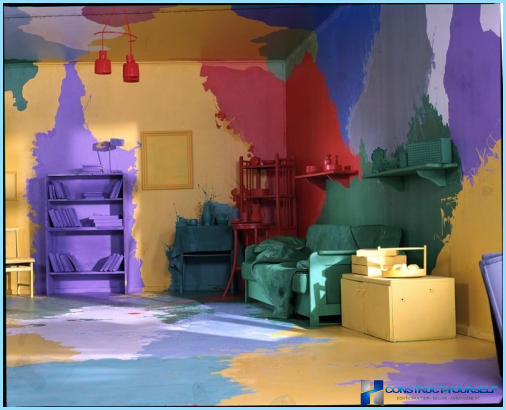
Enamel paint application and details ↑
The first thing to mention leading a conversation about the work with the finishing material is do I need to putty the surface under the enamel paint. On this issue we can say that not at all, enamel has good adhesion to all known materials, so the preparation to filling is not required. If the surface with no significant bumps, just enough to efficiently clean it from dust and dirt, and then primed, and if it’s meant this paint for ceramics and enamel coatings, you can do without priming. In question than to dilute the enamel paint, it is safe to say that there are suitable diluents of any sample and solvent.

